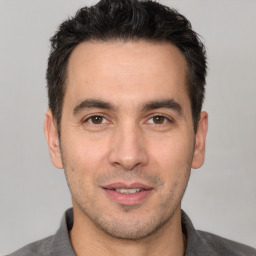This sample will guide you about
- Explainig about Monitoring Human Body Fat
- Explaining about Densitometry
Monitoring Human Body Fat
The human body is made up of two components known as fat mass and lean body mass. Although, fat is required by the human body to survive, excess of it poses several risks and harms for an individual. It is for this reason that greater importance has been assumed by assessment of body fat levels (Springer and et.al., 2010). There are various techniques which can be used for monitoring human body fat. However, it is important to determine if these techniques are suitable for the measurement of fat in human body. The present essay discusses various techniques that are suitable for monitoring human body fat such as MRI, ultrasound, densitometry, Duel Energy X-Ray Absorptiometry etc. In the essay, relative advantages and disadvantages of these techniques have been discussed. Along with that, risk, cost effectiveness and patient considerations have also been taken into account.
Various techniques can be used for the assessment of body fat. These include MRI, ultrasound, densitometry etc. In order to assess the suitability of these techniques, their relative advantages and disadvantages can be determined. MRI or magnetic resonance imaging is an imaging technique which is used for estimating the volume of adipose tissue. It provides high quality imaging data in the form of “imaging slices†with the help of which regional tissue volumes can be calculated. The advantage of using MRI is that it not only helps in scanning the whole body for fat but also scans individual organs (Springer and et.al., 2010). Hence, fat content of individual organs can be measured. However, MRI discerns only that fat mass which is present in the adipose tissue.
Densitometry is effective at distinguishing between fat mass and fat free mass. This technique has better precision than hydrodensitometry for monitoring fat in children. However, the disadvantage is that densitometry may lead to overestimation of fatness (Hangartner and et.al., 2013). Ultrasound is extensively used for measuring tissue structure. This technique has advantage that it accurately measures subcutaneous fat thickness. It also quantifies intramuscular fat. However, the disadvantage of this method is that it may mistake fascia for the boundary layer between muscle and subcutaneous fat. Hence, it requires considerable skills, practice and training (Pineau and et.al., 2010).
MRI cannot be considered as a cost effective method as it has a relatively high cost. It also has patient considerations associated with itself. These include the effects of static magnetic fields, effects of radio frequency and effects of magnetic gradient (Thomas and et.al., 2013). It may pose risks as the magnet that may affect artificial limbs, pace makers and other medical devices containing iron. Densitometry proves to be useful when changes are to be monitored over time (Oreopoulos and et.al., 2010). Ultrasound technique is also not cost effective solely for the measurement of body fat. Also, the patient needs to be prepared before the examination is done. This procedure is safe and it does not present any health risks for the patient. This is as the equipment used in this method is quite expensive.
Monitoring can also be used in preventive medicine. By monitoring of body fat, various conditions such as heart diseases can be prevented. It can also help in preventing high cholesterol and obesity (Prevention and Treatment of High Cholesterol, 2016). Further, damage of vital organs such as liver due to fat deposition can be prevented.
Monitoring can be used for evaluating clinical disease. For example, fatty liver has close associations with obesity, coronary artery disease, corticosteroid medications etc. Hence, with monitoring, disease of liver can be evaluated (Bonapace and et.al., 2012).
From the essay help, it can be concluded that ultrasound is suitable for monitoring body fat with respect to being cost effective. However, MRI is more accurate and also helps in scanning the internal organs for the presence of fat.
REFERENCES
- Bonapace, S. and et.al., 2012. Nonalcoholic fatty liver disease is associated with left ventricular diastolic dysfunction in patients with type 2 diabetes. Diabetes Care. 35(2). pp.389-395.
- Hangartner, T. N. and et.al., 2013. The official positions of the international society for clinical densitometry: acquisition of dual-energy X-ray absorptiometry body composition and considerations regarding analysis and repeatability of measures. Journal of Clinical Densitometry. 16(4). pp.520-536.
- Oreopoulos, A. and et.al., 2010. Comparison of direct body composition assessment methods in patients with chronic heart failure. Journal of cardiac failure. 16(11). pp.867-872.
- Pineau, J. C. and et.al., 2010. Ultrasound measurement of total body fat in obese adolescents. Annals of Nutrition and Metabolism. 56(1). pp.36-44.
- Springer, F. and et.al., 2010. Liver fat content determined by magnetic resonance imaging and spectroscopy. World journal of gastroenterology: WJG. 16(13). p.1560.
- Thomas, E. L. and et.al., 2013. Whole body fat: content and distribution. Progress in nuclear magnetic resonance spectroscopy. 73. pp.56-80.























